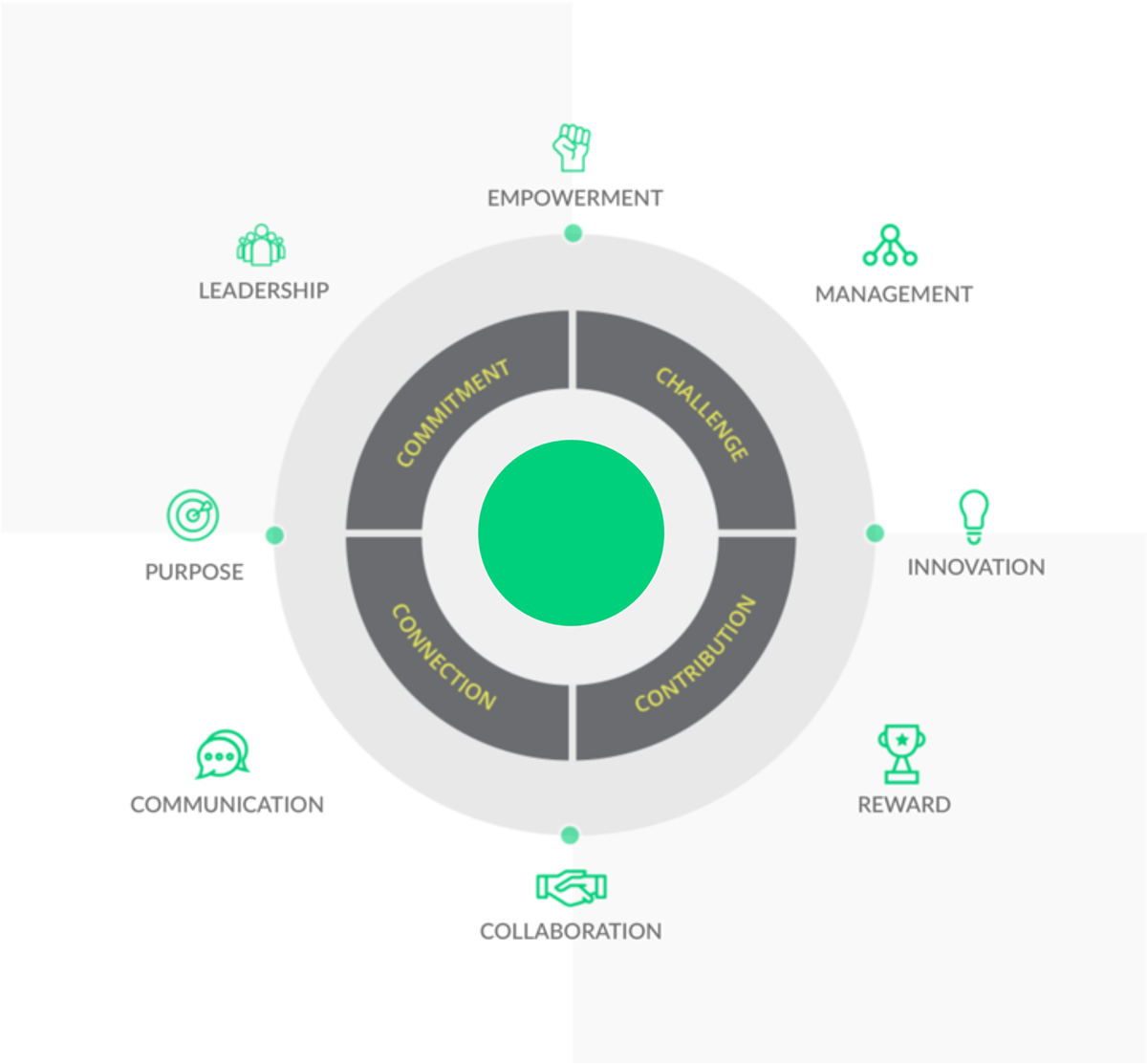Strengthening customer loyalty
New, Big Data-based inbound marketing tactics are helping companies refine their messaging to appeal directly to a wider range of demographic/psychographic groups. However, it’s not enough to build a larger user base. The overriding goal for marketers has always been changing consumer habits in the long term. Creating products that help companies accomplish this objective has always been challenging. Designers realize that traditional marketing methods aren’t enough to initiate complex behavioral challenges. Consider all the New Year’s resolutions broken, unused gym memberships, etc.
Intrinsic motivators are key
New products need to meet the unfulfilled intrinsic needs/aspirations of consumers. Intrinsic motivators include things that give people a sense of “meaning, purpose, connection with others, self-expression, mastery, and autonomy.” When users feel a strong internal connection to a brand, they’ll visit a company’s website without prompting. Competing products on other websites are ignored once the pattern is set for a favorable response to your product/brand. So, it’s a matter of who among your competitors connects with users first.

Triggers
Triggers that prime a user to purchase can be external or internal. External triggers would be email, website links, or perhaps a smartphone app. Over time, users internalize these positive associations creating new, internalized triggers that drive habitual behaviors. The degree to which a company can utilize habit-forming technologies will increasingly decide which products and services succeed or fail.
Variable rewards
Because our species evolved in an unpredictable natural environment (with hard to predict day to day rewards/results for any given action), we’re hard-wired to respond to variable rewards. Modern examples include slot machines, lotteries, and the fast-paced, interactive dynamic of video games.
The same dynamic applies to ads we see online. Levels of dopamine increase when we see a product a second or third time targeting people with our demographic/psychographic profile. Over time, without our knowing it, online marketers learn more about us, sharpening the impact of their ‘buy’ messages with each pass.

Achieving win-win solutions
Companies need to learn how to harness the power of ‘hooks’ to improve peoples’ lives, while consumers need to understand how behavioral engineering works to protect themselves from unwanted manipulation. There needs to be a win-win dynamic that includes helping consumers discover the benefits of innovative, life-enhancing products specifically tailored for them.
So, online marketers are now advantaged by more effective messaging combined with a capacity to process data at ever higher speeds. This means we live in a world where virtually anything is potentially addictive.
Conducting user research
The first step in this process is getting baseline information about the users you want to target. At this stage, getting context-rich, qualitative data is the best approach to learning what potential customers want to see in new products or services.
To attract consumers in the longer term, you need to establish consumer credibility by focusing on the following–
- Value—You need to explore and validate how a new product would benefit users—including those that meet hidden needs. Would it save consumers time? Would it enhance their health and psychological well-being?
- Desirability—To improve desirability, you need to understand human psychology and especially users’ emotional needs and unconscious motivations. For example, when launching a new clothing line for a younger demographic, does it meet their expectations for comfort, value, as well as ‘hipness?’
- Adoptability—To understand adoptability, you need to understand how your users process information about new purchase options. For example, would users respond favorably to drone-delivered take-out meals?
Getting the attention of buyers
So, you have plans for a highly marketable new product. How do you get the word out?
- Attractive packaging—People expect crisp, inventive written content a well as dazzling videos, graphics, and compelling storytelling.
- Emotional hooks—You are much more likely to connect new customers with an ‘emotional hook.’ Does your product or service trigger a sense of curiosity, surprise, or urgency (e.g., the latter using techniques like scarcity or loss aversion)?
- Personalized content—Again, you need to customize your messaging for different demographic and psychographic profiles. People are much more likely respond to messaging that is relevant to their values, interests, and activities.
Prioritize your design resources
Once you’ve painted a comprehensive picture of user needs and processes, it’s time to define a product’s features and content based on insights you gain from user research. More specifically, you should think of product strategies in terms of the following aspects of user experience–
- Value—After determining the product features users would respond to, you can significantly enhance the value of your new product for current and potential customers.
- Desirability—Creating emotional resonance is critical. When research reveals ‘trigger points’ that predict repeated usage, you increase your conversion rates.
- Adoptability—When you understand user your users’ decision-making process you can create product and marketing strategies that increase adoption.
Marketing research needs to inform the design process
After carefully researched what customers want in new products, you can define your product design. Once you’ve defined the business requirements for a new product, you can deploy your design resources accordingly to value, adaptability, and desirability for maximum customer appeal. This results in much better alignment between your design effort and business results.
Usability is essential to winning new customers
Research shows that designers often fail to consider how to get customers to begin using new products or their long-term utility. This results in a failure to realize a product’s business potential.
Getting users to begin using a product or service is key to business success
- Persuading customers to start using online discount sites like Groupon
- Prompting runners to begin using running mobile apps to track their progress and improve their fitness
- Persuading home buyers, for example, to begin using Zillow.com to search for a new home
Getting users to continue using a product is the other half of the equation. This involves–
- Persuading shoppers to continue using online discount sites like Groupon
- Providing runners with addicting running mobile apps to stay in shape
- Persuading home buyers to use Zillow.com repeatedly to search for a new home
Value, adoptability, and desirability have the greatest impact on getting people to try a new product. Improving a customers’ ability to complete tasks, on the other hand, determines whether customers stick with a product in the longer term.
This begs the question—Why is this misalignment between design and long-term business value so prevalent? It’s in part the lack of designer awareness of the user experience, but even more, the result of a fragmented design process characterized created by rigid silos within an organization that do not communicate or coordinate effectively on projects.
50% of leads in any system are not ready to buy, and nearly 80% of all new leads will never become sales.
Designers need to be as informed as marketers are about the latest insights into the path people take through both when selecting and using products — to help specify what engages them to stay motivated and engaged over time. Behavioral research helps us assess how the entire process could be improved—more specifically, to help identify what stages in the journey are working well and which need improvement. This ultimately strengthens designs and reduces the risk that products will quickly fall by the wayside.
Usability is typically neglected in the womb-to-tomb process—even though it is the most frequently mentioned aspect of user experience. The reason? — There is often a confusing diffusion of user experience functions spread across business silos.
In this typical example, different teams work in silos on user experience elements that should be integrated with one another. In many cases, they don’t even involve the product design team in these negotiations. Thus, product designers do not influence these elements of the user experience, and their role is limited to delivering visual and interaction designs for the user interface itself.
EMPLOY THE FOLLOWING STRATEGIES–
According to Marketo, about 50% of leads in any system are not ready to buy, and nearly 80% of all new leads will never become sales. With marketing automation, those odds can be improved by giving people tailored information and incentives to encourage conversions.
- Provide clear-cut content. Avoid jargon, big words, and digressions. Make your message specific and simple to understand. Develop content that anticipates user questions and helps them make an informed choice among product options.
- Be clear on product benefits. Depending on the situation, this may include extrinsic rewards (e.g., rebates), intrinsic motivators (e.g., mastery and a person’s sense of purpose). Describe the benefits clearly. People want to know what’s in it for them. This might include extrinsic rewards (money, rebates), lifestyle enhancements (e.g., a new sound system), or appeal to a person’s intrinsic motivations (e.g., sense of purpose and mastery).
- Offer recommendations. People will be more compelled to do something when provided clear next steps or options. Users value suggestions and personalized advice from experts or trusted sources (including social networks).
- It can also help to reframe your message to nudge consumers towards a specific choice. You can also use social motivators like social comparison, or inform them that a product is nearly sold out to spur them to action.
Facilitate customer follow through
When a customer decides to act, follow through must be easy and seamless. This is achieved by simplifying and streamlining the conversion process with a simple, clean interface enhanced by ongoing analysis of barriers that may be preventing people from completing the purchase process. It’s also helpful to enhance product desirability with walkthroughs, callouts (phrases or sentences used to call attention to features of special interest), and pre-determined defaults (based on a customer’s purchase history). Timing is also critical, contacting customers when they’re most likely to act.
Sustain positive customer engagement
The best outcome is establishing customer loyalty. This requires products designed for continual customer use and interaction. One purchase isn’t enough. For products to have a long-lasting appeal, new products need to be useful for customers in the longer term. It also helps if you reward people with positive feedback, including things like a variable rewards schedule to encourage engagement. It’s also much to your advantage to leverage intrinsic motivators that enhance your users’ sense of purpose, social connectivity, autonomy, mastery, and social status. And, as you learn more about the people using your products, your messaging becomes even more effective.
Conclusion
Effective marketing requires a continual customer feedback loop beginning with product design. To remain competitive, companies need to move beyond the traditional silo-based approach to remain competitive. –This is because when marketing comes into the picture only after product launch, it too often results in products that don’t meet customer needs and preferences. Outcomes are greatly enhanced when different organizational silos collaborate throughout the process of product introduction. It’s important to understand that leaner, more competitive companies achieve superior results by collaborating cross-functionally across different internal domains.













